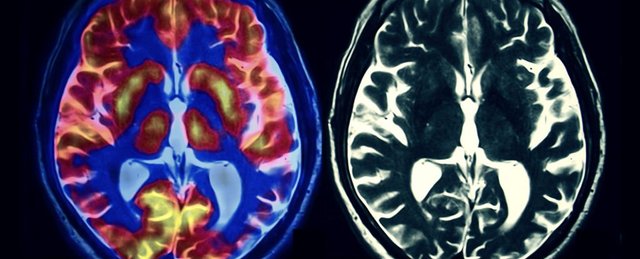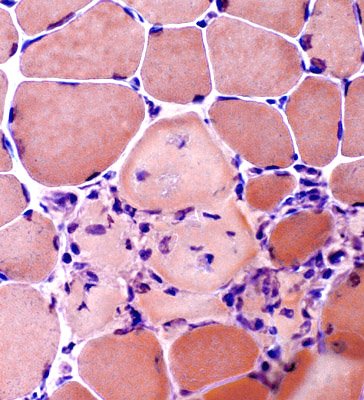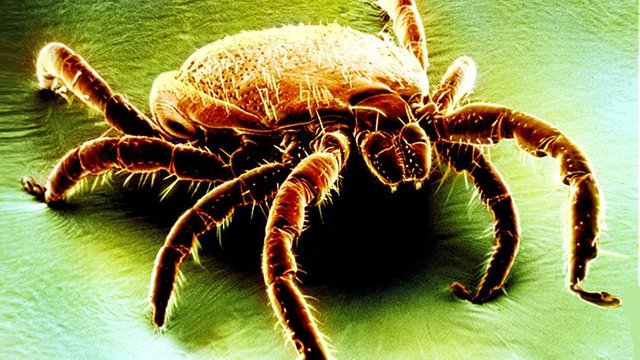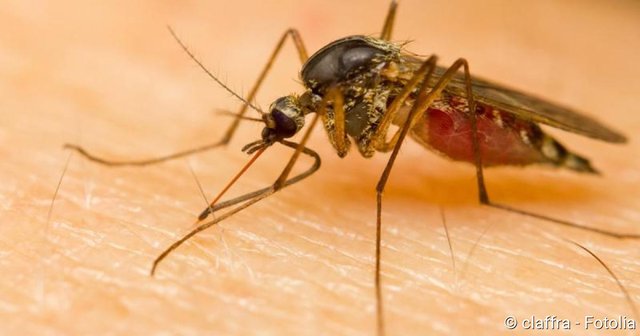10 Breathtaking Things Scientists Just Did Using CRISPR
It's like someone has pressed fast-forward on the gene-editing field: A simple tool that scientists can wield to snip and edit DNA is speeding the pace of advancements that could lead to treating and preventing diseases.
New findings are now coming quickly, as researchers can publish the results of their work that's made use of the tool, called CRISPR-Cas9.
In the past year alone, dozens of scientific papers from researchers around the world have detailed the results of promising studies that used CRISPR to snip out and replace unwanted DNA to develop treatments for cancer, HIV, blindness, chronic pain, muscular dystrophy and Huntington's disease, to name a few.
The pace of basic research discoveries has exploded, thanks to CRISPR. Let’s take a look at the recent advances in the fights against 10 diseases that demonstrate CRISPR's capabilities, and hint at things to come.
1.Cancer

Researchers predict that a CRISPR-based treatment could one day slow the speed at which a tumor spreads, or perhaps reverse the disease completely.
Some early work in this area is happening already in China, where regulations governing the use of gene editing in humans are more relaxed than they are in the United States.
In October 2016, a lung cancer patient in China became the first of 10 people in the world to receive an injection of cells that had been modified using CRISPR. The researchers modified the immune cells taken from the patient's own blood and disabled a gene that produces a protein that cancer cells normally hijack in order to divide and multiply.
Research teams in the United States are also eyeing ways to use CRISPR to fight cancer in late 2017. They are going to conduct a clinical trial on 18 cancer patients in late stages of melanoma (a skin cancer), sarcoma (a cancer of soft tissue) and multiple myeloma (a cancer of the bone marrow).
2.HIV

Eradicating HIV, the virus that causes AIDS, has been an uphill battle. Not only does the virus infect the very immune cells in the body that attack viruses, but it's also a notorious mutator. After HIV hijacks a cell in the body and begins to replicate, it generates many genetic variations of itself, which helps it evade drug therapies. This drug resistance is a huge problem in treating people who are infected with HIV.
CRISPR has HIV lined up in its sight, though. In May 2017, researchers at Temple University and the University of Pittsburgh used CRISPR to snip the virus from the cell it was infecting, shutting down the virus's ability to replicate. This use of the technique, which was tested in three different animal models, was the first time researchers had demonstrated a way to eliminate HIV from infected cells, according to the researchers.
3.Huntington's disease

About 30,000 people in the United States have an inherited condition called Huntington's disease, a fatal genetic disorder that causes nerves in the brain to deteriorate over time.
In June 2017, scientists reported that they had reversed the disease in lab mice that had been engineered to have a human mutant huntingtin gene in place of a mouse huntingtin gene. The scientists used CRISPR to snip out part of the mutant huntingtin gene that produces the toxic bits.
After they did that, the number of toxic fragments decreased in the mice's brains, and the neurons began to heal. The affected mice regained some of their motor control, balance and grip strength.
For more details:
4.Duchenne muscular dystrophy

Duchenne muscular dystrophy is a debilitating condition that develops because of a mutation in a single gene, called the dystrophin gene, which is one of the longest genes in the body. A team of researchers is working with CRISPR to find ways to fight Duchenne muscular dystrophy.
Because of the mutation in the dystrophin gene, the body doesn't make a functional form of the protein dystrophin, which is essential for muscle fiber health. Over time, the lack of this protein causes progressive muscle degeneration and weakness.
In April 2017, Olson and his team reported in the journal Science Advances that they had used a variation of the CRISPR tool, called CRISPR-Cpf1, to correct the mutation that causes Duchenne muscular dystrophy. They fixed the gene in human cells growing in lab dishes and in mice carrying the defective gene.
5.Preventing blindness

One of the most common causes of childhood blindness is a condition called Leber congenital amaurosis, which affects about 2 to 3 per 100,000 newborns, according to the National Institutes of Health. The condition is inherited and is caused by mutations in at least 14 genes that are responsible for normal vision.
The Cambridge, Massachusetts-based biotech company Editas Medicine is working on a CRISPR-based therapy to reverse a type of the disease called Leber congenital amaurosis type 10. The company is aiming to file the necessary papers with the Food and Drug Administration by the end of 2017 to start the first human trials on treatments for this condition.
Editas was co-founded by Feng Zhang, a bioengineering professor at MIT who demonstrated that CRISPR-Cas9 could be used on human cells. Jennifer Doudna, of the Unversity of California, Berkeley, and Emmanuelle Charpentier, then of the University of Vienna, also demonstrated that CRISPR-Cas9 could snip DNA, and they filed a patent on the technology in 2012. The Broad Institute, which is part of MIT, submitted its patent in April 2014 and fast-tracked it, ultimately getting the patent. The Broad Institute's patent was upheld in February, 2017, after the University of California, Berkeley filed a lawsuit claiming Doudna had been first.
For further information about Editas Medicine and other Companies fighting for patents:
6.Chronic pain

Chronic pain is not an inherited genetic disease, but scientists are investigating ways to use CRISPR to curb back and joint pain by altering genes to reduce inflammation. Under normal conditions, inflammation is the body's way of telling the immune system to repair tissue. But chronic inflammation can do the opposite and damage tissue, eventually causing debilitating pain.
In March 2017, a team of researchers reported that they had used CRISPR to prevent certain cells from producing molecules that are designed to break down tissue and lead to the inflammation that causes pain.
The technique could be used to delay the degeneration of tissue after back surgery, for example. This could speed healing and reduce the need for additional surgeries to correct tissue damage.
7.Lyme disease

Lyme disease is caused by a tick-borne bacterium that can spread from deer-tick bites to people. If left untreated, the infection can cause joint inflammation, nerve pain, heart palpitations, facial palsy and other problems.
Scientists want to reduce the disease by using CRISPR-Cas9 to genetically modify white-footed mice in a way that would make them and their offspring become immune to the bacteria and unable to pass it along to ticks.
8.Malaria

Malaria kills hundreds of thousands of people per year. In 2015, the most recent year for which the World Health Organization has statistics, there were roughly 212 million malaria cases and about 429,000 malaria deaths.
To attack the problem at the source, research teams are aiming to reduce the populations of malaria-transmitting mosquitoes. Scientists will investigate two main courses of action: genetically modifying the male mosquitoes so that they produce more male offspring, and genetically modifying the female insects in a way that lowers their fertility.
In December 2015, scientists reported that they had identified three genes to reduce female mosquito fertility. They also announced that they had found that CRISPR could work to target at least one of them.
9.Crops

Just as CRISPR can be used to modify the genomes of humans and animals, it can be used to modify the genomes of plants. Scientists are investigating ways to harness the tool's gene-editing ability to reduce disease in some crops and make others more robust.
Scientists are looking at ways to remove the genes that make potatoes and wheat vulnerable to disease. They are also using CRISPR to develop tomato plants with branches that are optimized to handle the weight of ripe tomatoes and not break.
Several labs are trying to harness CRISPR to tackle a plant disease called citrus greening, which is caused by bacteria that spread by insects that fly among plants in a citrus grove.
10.Editing a viable human embryo

The speed with which CRISPR-based studies can go from hypothesis to result is astounding.
In February 2017, scientists said that altering the cells in embryos, eggs and sperm was ethically permissible provided that it was done to correct a disease or a disability, not to enhance a person's physical appearance or abilities.
Although no scientists in the United States have used CRISPR to modify a viable human embryo yet, a scientist team in China reported such an advance March 1, 2017. The scientists used CRISPR-Cas9 to introduce and then edit out disease-causing mutations from human embryos. The study was done to show that the genetic editing could be done at the embryonic stage.
Is there a way to participate in these groundbreaking developments?
If you are interested in supporting and investing in the CRISPR technology, the following article might interest you:
If you are interested in more recent content on CRISPR and other groundbreaking technologies, feel free to leave a comment, resteem or upvote
For further information:
https://steemit.com/science/@meisi51/hpv-about-to-be-cured-by-crispr-very-soon
https://www.livescience.com/59602-crispr-advances-gene-editing-field.html
http://www.nature.com/nsmb/journal/v18/n6/full/nsmb.2043.html
http://sheltzerlab.labsites.cshl.edu/
http://www.nature.com/news/crispr-gene-editing-tested-in-a-person-for-the-first-time-1.20988
very nice article :) its exciting to think what even more amazing things we'll be able to decades from now with this technology.
We only can imagne what will be possible in ten years from now. But I am certain that it will be awesome as hell. Medicine will make a giant leap like back in the times when vaccines and antibiotics where discovered
for sure!
Followed you and upvoted !
Thanks my friend ! Enjoy